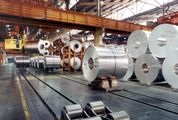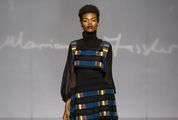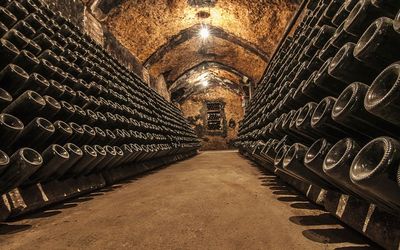THE quality of Cape chardonnay is one of SA’s best kept secrets. Despite the efforts of local and international wine writers, it appears that the news has not really reached the punters.
Sauvignon blanc still sells at the pace of Perrier water (probably for the same reason); chardonnay trickles out reluctantly like the truth about the Nkandla upgrades.
There is a lot of historical baggage around this — the early days of over-oaked chardonnay traded at frighteningly inflated prices being the heaviest burden.
But this doesn’t fully explain the reluctance with which the virtues of our local chardonnays are embraced. In fact, considering how bad the early sauvignon blancs were, and how their egregious faults persisted well into the 21st century, it may just be that our white wines are subject to the same double standards that have become the hallmark of the National Prosecuting Authority.
There’s no point in lamenting the failure of wine buyers to take full advantage of the pleasures offered by our chardonnays. They are also just as slow to make the most of our chenin blancs.
Clearly, while demand plays a role in bumping up the price of sauvignon blanc, rarity is not a factor when it comes to pricing either of these two varieties — except insofar as brand (the name of the winery, the wine maker or the appellation) is concerned.
Incidentally, this is true of all varieties: Diemersdal’s sauvignon blancs fetch more than other sauvignons from the Durbanville area, Constantia’s sauvignons come to market at higher prices than those from other cool, low-volume regions like Elim or even Elgin.
In the normal course of business, pricing is achieved gradually, partly via the market place. Brands that sit on retailers’ shelves are either delisted or discounted. Wines that hit the stores and bounce out like a flat stone off a sheet of water come back a year later at a higher price point. However, producers are not entirely passive in this engagement: price — especially in areas of aesthetic judgment, where objective criteria are not readily available — is a marketing instrument in its own right. What it costs to produce a pair of Ferragamo shoes has very little bearing on the selling price.
Perceived rarity, together with a deluxe finish, plays a major role in filling out the gap between production cost and selling price.
So when a new, never-before-heard-of chardonnay hits the scene at "just less than" R1,000 a bottle, an arched eyebrow is hardly an over-reaction. There are few red wine producers presumptuous enough to pitch their rarest bottlings from their oldest blocks at a level where the atmosphere is that low in oxygen. For a wine without pedigree to step onto the dance floor at Prince Charming’s party, there are only two scripts: the storyline of a fairytale or a technicolor Greek tragedy.
The wine — with a label that looks like the $100 price point it is set to sell for in the US — goes by the name of Capensis, and it is the brainchild of Graham Weerts, a South African who now heads wine making for the Jackson Family wine business in California.
Produced by a joint venture owned by Barbara Banke (Jackson) and Antony Beck (Graham Beck), the wine is a statement chardonnay bold enough to stand up to its pretensions. At the launch in Johannesburg, it was served in conjunction with a 2011 Louis Latour Batard Montrachet retailing for almost three times the price. It boogied alongside the grand cru Burgundy pretty much step for step — which at least makes clear that the pricing is not all puff. It exudes the craft, polish and precision that went into making it and the sumptuousness you would expect if you had just dropped R1,000 for the pleasure of pulling the cork.
Finance Minister Pravin Gordhan says we must tighten our belts. This is the wine to drink when the time comes to loosen them.



















Change: 1.19%
Change: 1.36%
Change: 2.19%
Change: 1.49%
Change: -0.77%
Data supplied by Profile Data
Change: -0.08%
Change: 0.12%
Change: 1.19%
Change: 0.00%
Change: 0.10%
Data supplied by Profile Data
Change: 0.32%
Change: 0.40%
Change: 0.40%
Change: 0.22%
Change: 0.58%
Data supplied by Profile Data
Change: 0.08%
Change: -0.41%
Change: -0.13%
Change: -0.33%
Change: 0.10%
Data supplied by Profile Data